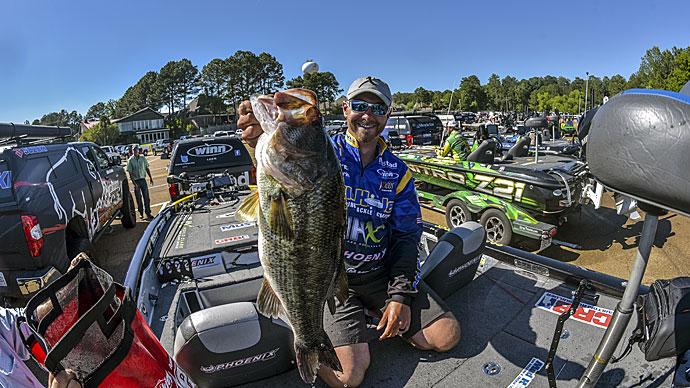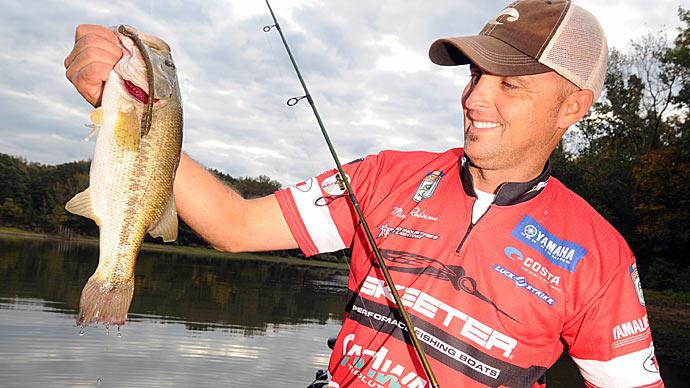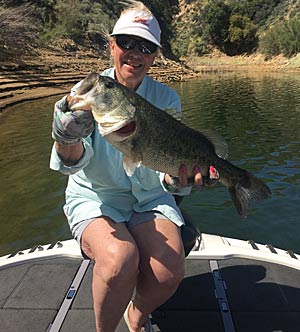
To Each His Own:
It seems that most people have their favorite method for catching bass. A Pro angler will usually say a reaction bait or swimbait is their favorite, and if you talk to a Delta angler, they will say they love flipping. Ask me what my favorite method is, and I’ll say without hesitation - the Texas rig.
When it comes to fishing lures, it can get complicated deciding which size, color, and action is best depending on where the bass are and what they are feeding on. To me, everything seems more complicated than the simple Texas rig.
Past to Present:
Thirty years ago, we mostly used a spinnerbait, Rat-L-Trap, crankbait, or a finesse bait like a dart head, tube, or split shot.
While my son Aaron always liked using reaction baits, I latched on early to the Texas rig. He would throw his lures from the front of the boat, and I would follow up with a Texas rig or cast a split shot around the boat. What he didn’t catch on reaction baits, I would catch with a Texas rig or split shot. He often told me that we just went over a fish, and I would wait until we were a distance away, then cast my bait back to the area and catch it. Many of us still do that.
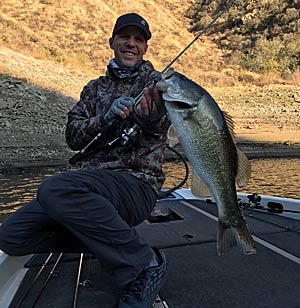
As most of you know, Aaron also mastered finesse fishing and will quickly pick up a spinning rod and reel whenever necessary. That is why his nickname is “Spin” among the Elites. But, he is not ashamed of using an eggbeater. Aaron and I became good finesse anglers in the 90s, especially with the Texas rig, by making long casts and “Shaking” the bait back to the boat. When asked how we caught them, we would say we were shakin’ a 6-inch worm. I think that’s where the term “Shakin” originated from.
Reaction baits are used to cover lots of water and locate aggressive fish. Anglers usually start in the morning with reaction baits and sometimes stay with them all day long, especially when the lakes are new.
Aaron lamented to me this week that he could have done much better than 55th at the Toyota Bass Fest if he had drop shotted on the second day instead of using reaction lures. He got stuck on the pattern that worked so well to catch big ones during pre-fish and ignored his gut feelings to drop shot during the tournament when conditions changed. Speaking of the drop shot, that’s my “go-to” when the Texas rig becomes ineffective. If you’ve noticed, it seems the drop shot has super-ceded all the other finesse styles in the past few years.
Teaching Tips:
Have you ever had anyone ask you to take them fishing and show them how to catch bass? If so, you probably laughed like I do because bass fishing takes more than a day to learn. Because there are so many variables, and things keep evolving, no one knows everything about bass fishing. Like any sport, that’s a good thing. Anyone serious about fishing needs to be teachable, versatile, and remain enthused about it. To be a good angler, it will take lots of actual fishing and not just reading about it or watching t.v. and videos. Aaron and I learned almost everything by doing it and by trial and error.
I was a fishing guide for many years and taught people of all ages how to fish. The method I chose was the Texas rig for many reasons. It’s simple to tie on and cast, and the bite is usually easier to detect, making hooksets more successful. If the Texas rig gets snagged, it usually comes loose, but it’s easy to retie if it breaks off.
I also like the way it goes through trees and brush, plus it’s much easier to cast around docks and cover. A while back, I went to Castaic with my friend Liz. We caught over 100 fish, all on a Texas rig, and it continued to dominate for weeks. We used various sized hooks, weights, and Robo Worms; and cast into and around trees, rock piles, and walls. We rarely ever broke off.
Even now, when instructing beginners, I use a heavier weight to feel and stay on the bottom and make a more natural presentation. These things are not as easy to teach with other styles of fishing. However, once a person learns a Texas rig, they can learn all the different techniques much more effortlessly.
Is My Texas rig Shaky?

Recently I fished with Aaron in Alabama, and we caught tons of bass - mostly on his new shaky Rhino Head made by Picasso. It took Aaron years to develop this new design, and it’s fabulous. The big difference with the Rhino Head is how the bait always stands up, which is bound to attract more fish. The Gamakatsu hook with worm keeper allows you to use the same bait repeatedly, which saves money and time. The Rhino Head protects the top of the worm, so the knot is protected, stays in place, and the line is protected from the teeth of the fish, so you rarely have to retie. They come in three weights and three colors with two hook sizes to choose from, with more selections on the way. You might check out Aarons video and products on www.picassooutdoors.com. I just did and learned some things that Aaron didn’t tell me!
Just like drop-shotting, the Pros are using the shaky head more. We hear very little about the Texas rig unless they’re flipping it with a heavy creature bait. In defense of the Texas rig, I would like to share some features.
A Texas-rigged weight will easily separate from the hook during the cast and the bait while being dragged or going through the cover. We would peg the weight to prevent that from happening in the past. When the weight is hung up in brush or rocks, the bait tends to float freely away from the weight and can often attract a bite. The same thing applies when you’re shaking or dragging it. This can be good in some circumstances. You can use various sized weights, hooks, and plastics, making the Texas rig versatile and easy to adjust.
What’s Your Favorite Color?
Lately, Aaron calls while on a long drive somewhere, and we have mini-seminars, especially on the Texas rig and shaky head. Aaron and I have developed our own opinions regarding tackle choices, and we vigorously defend our favorites. An example would be me loving “Morning Dawn” colored Robo worms for years and using them on most lakes way before the color caught on. I love all the pinkish baits, including “Oxblood” and “Peoples.”
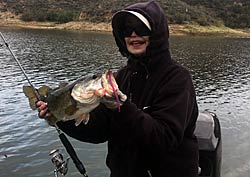
My secret ensemble for catching smallmouth has been “Morning Dawn” on a Bleeding Bait hook made by Daiichi. I use a small hook for drop shots and a larger offset hook for my Texas rigs. Most of the time, I use the Bleeding hooks, while Aaron has always used Gamakatsu. He’s still not convinced that red works better than grey or black hooks.
We debate worm colors, when to use them, and why our favorite hooks are the best. I’ve noticed. Lately, he’s using “Morning Dawn” as one of his go-to colors. I guess that would be one victory for me! I think his favorite is still “Aaron’s Magic.”
I know he respects my opinions, but most of the time, I learn from him and make adjustments. Remember that our views and favorite tackle are usually born out of our successes, and there is no “one right way” to use or do anything.
Am I Shakin or Shaky?
I love that the shaky head is easy to cast or flip and that it’s weedless. That’s important when fishing around docks and cover. The shaky head is easier than a Texas rig to retie. Overall, the shaky head is more straightforward to fish with and can use anywhere all year long. Maybe Aaron will win this one, and the shaky Rhino Head head will become my new favorite?


